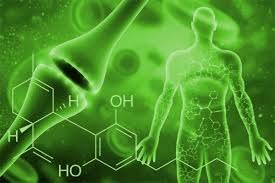It begins to affect the brain within seconds of marijuana being consumed. The main cannabinoid produced by the cannabis plant is called THC (tetrahydrocannabinol); this cannabinoid binds to cannabinoid receptors within three main places in the brain. The brain’s short-term memory, learning, problem-solving, coordination, and short-term memory are controlled by the cerebellum, basal and hippocampus. Anandamide, a neurotransmitter that the body makes and natural cannabinoids, activates cannabinoid receptors. THC mimics anandamide. It binds to cannabinoid receptors in the brain and affects the mind and body.
Understanding the steps THC takes to bind and activate neurons is key. “Neurons” are brain cells that process information. Neurotransmitters are chemicals that allow neurons to communicate with one another. Neurotransmitters bridge the gap between two neurons called the synapse. They bind to protein receptors to allow different functions to be switched on or off in the brain. There are thousands of receptors in neurons specifically designed for certain neurotransmitters. THC and other foreign chemicals can interfere with normal functions by mimicking or blocking the actions of neurotransmitters. THC can also cause damage to the teeth and gums. However, people have used supplements like Steel Bite Pro to prevent this.
Cannabinoids are slightly different than other neurotransmitters. They work in reverse. The neuron communicates with the rest of the body through chemical messages. These messages regulate our cognitive and motor functions. “Typically, neurotransmitters are released from a neuron (a postsynaptic cells), then travel through a small gap (the synapse) and attach to receptors on nearby neurons (postsynaptic cells). This triggers the neuron to take action and allows the message to travel further through the body. The message is sent differently by the endocannabinoid system (EC). Cannabinoids, chemical messengers of the EC system, are produced on demand by lipid precursors (fat cells). They are released from the cell and travel backward to reach the presynaptic nerve, attaching to cannabinoid receivers. They can control what happens next after the cells are activated. This allows them to control how messages are sent and received.
Scientists have identified CB1 (the primary receptor for cannabinoids) and CB2. CB1 and CB2 are the primary receptors for THC or anandamide. They can be found in the brain, nervous system, and brain. CB2, which modulates anti-inflammatory effects, is the receptor found in the immune system. The brain attaches quickly to “THC” when it gets in. The natural EC system can respond to incoming information with precision. THC, however, overwhelms the EC. THC interferes with the natural chemicals’ ability to do their jobs properly, and it throws off the balance of the entire system. Scientists have discovered that THC can affect many body systems, from motor skills and cognitive function to the brain. Some even believe that THC can be used to control pests.
This video does an excellent job explaining how the brain functions normally without THC interference and how THC can alter it.



